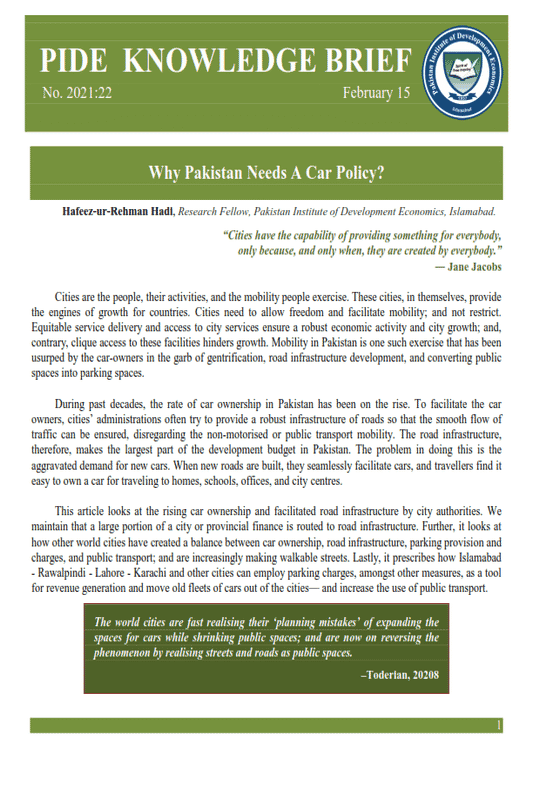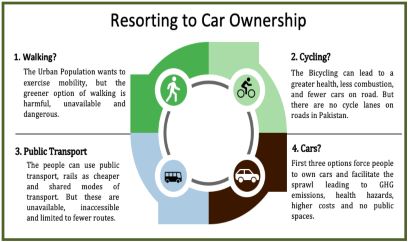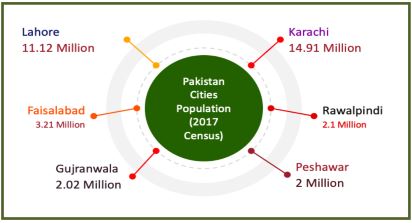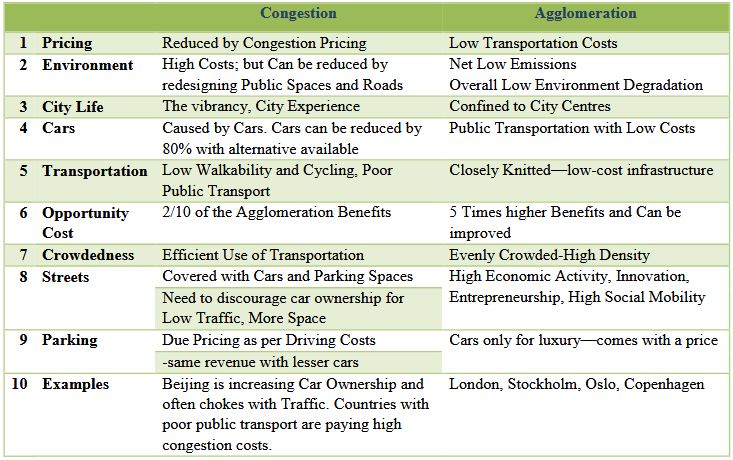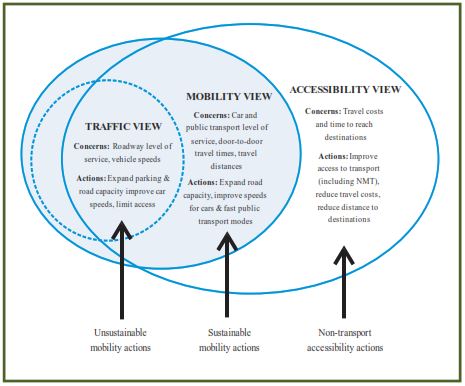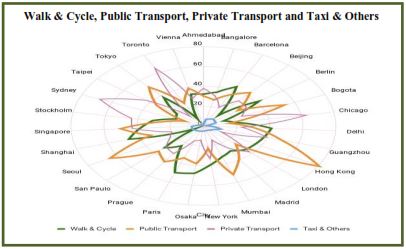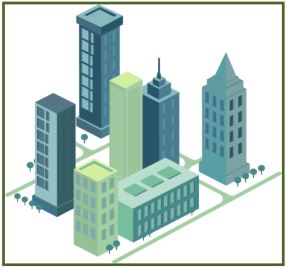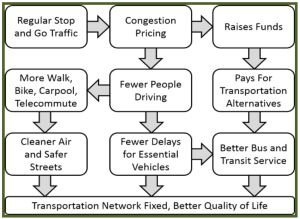
Pakistan Institute of Development Economics
- Home
Our Portals
MenuMenuMenuMenuMenuMenuMenu - ResearchMenuMenuMenuMenuMenuMenuMenu
- Discourse
- The PDR
- Our Researchers
- Academics
- Degree Verification
- Thesis Portal
- Our Portals
Why Pakistan Needs A Car Policy?
Why Pakistan Needs A Car Policy?
Hafeez-ur-Rehman Hadi, Research Fellow, Pakistan Institute of Development Economics, Islamabad.
“Cities have the capability of providing something for everybody, only because, and only when, they are created by everybody.”
― Jane Jacobs
Cities are the people, their activities, and the mobility people exercise. These cities, in themselves, provide the engines of growth for countries. Cities need to allow freedom and facilitate mobility; and not restrict. Equitable service delivery and access to city services ensure a robust economic activity and city growth; and, contrary, clique access to these facilities hinders growth. Mobility in Pakistan is one such exercise that has been usurped by the car-owners in the garb of gentrification, road infrastructure development, and converting public spaces into parking spaces.
During past decades, the rate of car ownership in Pakistan has been on the rise. To facilitate the car owners, cities’ administrations often try to provide a robust infrastructure of roads so that the smooth flow of traffic can be ensured, disregarding the non-motorised or public transport mobility. The road infrastructure, therefore, makes the largest part of the development budget in Pakistan. The problem in doing this is the aggravated demand for new cars. When new roads are built, they seamlessly facilitate cars, and travellers find it easy to own a car for traveling to homes, schools, offices, and city centres.
This article looks at the rising car ownership and facilitated road infrastructure by city authorities. We maintain that a large portion of a city or provincial finance is routed to road infrastructure. Further, it looks at how other world cities have created a balance between car ownership, road infrastructure, parking provision and charges, and public transport; and are increasingly making walkable streets. Lastly, it prescribes how Islamabad
– Rawalpindi – Lahore – Karachi and other cities can employ parking charges, amongst other measures, as a tool for revenue generation and move old fleets of cars out of the cities— and increase the use of public transport.
The world cities are fast realising their ‘planning mistakes’ of expanding the spaces for cars while shrinking public spaces; and are now on reversing the phenomenon by realising streets and roads as public spaces.
–Toderian, 20208
URBAN MOBILITY AND CAR OWNERSHIP
People move to urban areas in pursuit of employability, better lifestyle choices, health facilities, improved service delivery, proximity to amenities, and much more. Urban spaces are built on the single principle of keeping many aspects of life in a finite amount of space—agglomeration. When a small piece of land is used for multiple types of land utility, it results in people living and working together. In an agglomerated city, if the city is unable to manage crowding then it results in congestion—that chokes the service delivery mechanism. This also results when interest groups start benefiting from skewed and stunted policymaking processes of city- planning.
The secret for any city to thrive is to achieving maximum utilisation of space by fine service delivery of functions of a city from transportation, sewerage, cleaning services, utilities, etc. The battle to create a balance keeps the city authorities on their toes because of high rural to urban migration.
Haque (2015, 2019 and 2020) has raised the important issue of car ownership, blatant increase in poorly
planned road–infrastructure as part of urban mobility. Sadly, the lack of forum of discussion for such topics has
led to invading view that ‘cities are brick and mortar.’ City authorities develop more roads to facilitate the
smooth flow of traffic but it creates induced demand which results in more cars on roads. Then city authorities
build more roads and then more cars and this circle continues.
Pakistan has one of the fastest rural to urban migration and, resultantly, Pakistan now has some of the largest cities in the world. While the world is adjusting to high-rise buildings and constructing residential towers, Pakistan chose to horizontally expand cities resulting in huge urban sprawl. As these cities have become populated, the usual urban problems—traffic congestion, poor city liveability, and health issues—have arisen.
People need mobility and cities must facilitate it with infrastructure that is inclusive and accessible for its residents. City authorities of Pakistan have limited capacity to cope up with the growing metropolises and their urban issues. However, cities in Pakistan have chosen to make mobility an eased experience for car-owners and a daunting task for those who do not own cars.
 1. HIGH COSTS OF MOBILITY
1. HIGH COSTS OF MOBILITY
As cities grow, the cost of moving around them increases with distance, therefore people need affordable and accessible transportation modes. As cities in Pakistan lack public transportation, the facilitation to pedestrians and cyclists is not only poor but dangerous, hence people resort to cars. Historically, this lack became a stimulus for owning cars that in return facilitated urban sprawl.
Therefore, we assert the need of having a car policy for urban mobility with mobility options, lower environmental and human stress. The rising number of car-ownership, its contribution to traffic and pollution calls for a policy that outlines the effective usage of cars. A forward-looking car policy must be devised to address the issues of urban planning and cities’ governance. In this regard, the Pakistan Institute of Development Economics is proposing the car policy to make ailing cities liveable.
Since ride-hailing services are fast becoming the default mode of transportation from the middle-class jobholders, there is a rising portion of income that is spent on mobility within the city. The average monthly cost of a job holder in Pakistan using the ride-hailing services reaches 12,000 to 15,000 without any freedom since these are demand-based rides and do not offer stops in-between.
People agglomerate in cities to find jobs and seek economic and social mobility, similarly, firms tend to be officed in the city centres to be close to the market or amenities. The increased car ownership excused with urban spread-out has discouraged the development of public transport systems, fewer bicycle, and car lanes.
While the developing countries are facing an exponential increase in car ownership in face of bad public transport, the developed countries are programming to make the cars ‘things-of-past’ by providing better alternatives—public transportation with better connectivity, bicycle lanes, and street space for pedestrians. In the face of congestion adversity and high environmental costs; cities are rethinking the usage of streets, cars, and cities themselves.
3. CONGESTION COSTS VS. AGGLOMERATION BENEFITS
There is abundant evidence that agglomeration benefits outdo the congestion costs. The evidence exceedingly suggests that countries with poor urban governance have far more congestion costs than the countries with better urban governance and higher agglomeration. Cities have developed mechanisms that not only avert the congestion in cities through speed-lanes, higher parking fees, congestion taxes, restricted cars in city centres; but also, have made them long-term sources of their revenues, as discussed later part. The cities of London, Stockholm, and Singapore among others generate positive cash-flows through their car policies within the city.

These congestion costs can further be minimised by exercising due pricing. Baert and Raynaert estimated that for a 1 percent increase in the agglomeration benefits, the positive effect is 0.073 percent in productivity— and varying increase in economic activity. And losses incurred through 1 percent increase in congestion are 0.01 percent, suggesting the huge comparable advantage of agglomeration.

4. STREETS ARE SHARED PUBLIC SPACES
The street experience is fast becoming the focus of urban governance; from city centres to off-street parking requirements. Cities are realising the foregone value of land utilised by cars. Ben Toderian, Donald Shoup, Nadeem Ul Haque and many others have been asserting that streets must be at the centre of city experience. Streets are shared public spaces and part of city land that must be priced commercially and indiscriminate. Therefore, streets must be used to generate social and economic activity rather than perishing to parking and car-traffic.
Ben Toderian and Janette Sadik Khan have extensively worked on designing streets for public and advocated accessible streets for all. These car-free areas generate more economic activity. A recent study in Barcelona suggested a 9.7 percent increase in retail activity in streets with public spaces and walkability rather than car-owned roads. In terms of space, 10 percent of car owners occupy more than 80 percent of streets and roads. Higher car ownership causes low city experience. It is established that social activity by redesigning streets for public use increases the vibrance.
Cars are luxuries and desired worldwide, but good cities reduce their demands by rightly pricing the car-experience.
-Brent Toderian, PIDE Webinar
WHAT ARE CARS FOR?
Since cars are so central to our urban planning, therefore one must ask the basic underlying question: What are cars for? The cars provide freedom of movement, and beyond necessity; car ownership is a luxury.
This leads to the following question: Does paying to own a car provides the owner with exclusive rights of freedom and luxury in society? Cities must realise the real costs of luxury and freedom are not of cars but also road depreciation, pollution, usage of space for parking and opportunity cost of that land usage, etc.
Therefore, the literature on car ownership has started posing an essential question in the urban planning of a tradeoff between individual prosperity collective betterment.
1. THE ASSOCIATED PROBLEMS
Car ownership in Pakistan has several associated issues and challenges including traffic congestion, high pollution costs, health deterioration, and higher costs of mobility. Intuitively, urban sprawl should decrease traffic congestion because of the spread of urban communities and societies. However, since this urban sprawl simultaneously encourages car-ownership; this leads to higher congestion costs without agglomeration benefits.
I. TRAFFIC CONGESTION IN CITIES—EXAMPLE OF LAHORE
In Lahore, (the largest city in the Punjab) car ownership in some sectors of DHA, Askari, Bahria Town exceeds 2.1 cars per household, as per our study. This high number of solo-driver cars in the city and country at large are a source of congestion in city spaces. The traffic in peak hours is so congested that on Noor Jahan Road—Liberty Roundabout to Hussain Chowk—a car can take up to half an hour for what is an average 1- minute drive on the empty road.
This congestion further leads to more accidents and health injuries, not disregarding the fact that noise pollution and excessive fuel costs are other externalities. During the daytime, the Zahoor Elahi Road and many other roads with schools are choked with traffic because there is no transportation system by the schools or government to pick-and-drop students from their homes. Lack of such facilities should lie at the core of the city’s mission to facilitate students, but are rather absent in the case of Lahore and other cities. The kids must be the last recipient of the pollution, yet they suffer in the congestion equally.
HIGH CONTRIBUTION TO POLLUTION
According to Dawar Hameed Butt, an environment activist, the AQI index, before the COVID-19 hit the cities, had reached the dangerous levels of 500 points. During the COVID-19 lockdown, the lack of traffic had brought the AQI to 70 points. This staggering difference shows that the high contribution of cars in air pollution and smog that is fast becoming the routine problem in the city.
MULTIPLE CARS OWNERSHIP
Cars in Pakistan are expensive, however, owning and maintaining cars is fairly cheap and evasive. The
process of registration in Pakistan is highly rigged, therefore even in larger cities, there are higher numbers of non-Customs registered cars. Unlike many developed countries, there is no compulsion of having insurance or maintenance standards, therefore, the households keep on owning multiple cars.
THE CAR REGISTRATION PROCESS
The car registration process in Pakistan is highly rigged. The vehicles can undergo overhaul changes to get
registered under different chassis numbers. The car owners can delay paying the tokens of cars for decades without the fine. At times of sales, car ownership is often not transferred, hence giving people a chance to not show the cars as assets. The ease of ownership has decreased the dependence on public transport within cities and trains, rail, buses for inter-city transport. This independence has assisted the city-elites to evade the responsibility of demanding inclusive public transport.
THE COST OF DRIVING
The true price of car driving is not what the driver pays while purchasing a car or paying for the gas he uses. It goes beyond in terms of roadwork, emergency services, damage to the environment, and the use of land in terms of parking and otherwise used by car. The associated costs can be categorised in Foregone Revenue by using land for parking rather than economic activity, pollution costs—inadvertently borne by society. According to Shoup, it takes 1-2 percent of maintaining roads for pedestrians and bicycle lanes than building roads and parking for cars. Similarly, the incremented economic activity revenue generated from the increased economic activity exceeds the parking costs in cities with streets as public spaces more walkability.
Similarly, the researchers associate higher risks of a medical emergency; deaths, and costs attached to these emergencies with the indirect costs of car ownership in cities. The policies are needed to distinguish the use of a modern car from need to luxury, and charge a price on that luxury like other commodities. The lack of walkable spaces in cities supports car ownership. Several studies suggest that the provision of good public transport and walkable spaces deter car ownership. In a city in the United States, if due to installed public transportation, the city gives up 15,000 cars, the city has $127,275,000 saved in terms of purchases, gas uses, parking, etc.
HOW DOES THE WORLD VIEW CARS?
Cities worldwide have emphasised working on shared modes of transportation that are inclusive, cater to the agglomerated urban experience, and with the least congestion can mobilise millions of passengers daily. The transportation structure of London, Seoul, Beijing, Tokyo, New York are testaments to these priorities. Rather than owning a car, the residents of developed cities are relying more on public and shared modes of transportation.
 1. THE CAR-FREE AREAS
1. THE CAR-FREE AREAS
The City of London has started exercising the car-free areas in the restricted zones of London on several days in a week to reduce GHG emissions, increase walkability, and making cities conducive for the public.
These car-free days are making considerable improvement in the environment, city experience, and encourage the use of public transportation. The revenues are collected by the city governments and can be allocated to the same areas, thus contributing to the local welfare.
I. PARKING RULES
Donald Shoup highlighted The High Cost of Free Parking and suggested that city governments must remove the off-street parking with high on-street parking. The associated costs with on-street parking shall deter the drivers to be part of congestion, and the fee shall discourage car-ownership. Many of the cities worldwide have taken his advice and are working on charging parking costs and eliminating off-street parking. The staggering facts of high costs of land dedicated to parking and the maintenance costs outnumber the rationality of efficient usage of land or resources.
II. THE FREE LUNCH
In developing countries, ownership of a car is a luxury, but it also evades the associated costs. The road services, land that cars use, and pollution are paid by the general public. A car normally occupies a space of 330 square feet, which is attributed freely for a car. This forgone cost is paid by society. In Islamabad every day around 280,000 cars enter through the vast road infrastructure present, if half of the traffic is charged for parking of paltry Rs. 10 then the city government can daily generate a revenue of Rs. 2.8 million.
III. REPURPOSING ROADS—CONGESTION PRICING
Cities are using their roads to streamline the traffic. In the United States, highways have congestion pricing strategies to make people avoid traffic. To take the express lane, the driver shall be priced. This pricing of car-ownership and using the express lane assists in maintaining the services of highways.
IV. STREETS AND PUBLIC SPACES
Cities are realising the importance of public spaces, and therefore the outdoor public spaces are being created. Cars in certain streets are banned or charged highly to provide city-experience to visitors. In the attempt to choose between the Individual prosperity vs collective betterment, cities are tagging a high price on individual prosperity.
CAR POLICIES IN GLOBAL CITIES
Globally, cities are fast becoming cognizant of the costs attached to increased car-owning and therefore are planning to reduce the car presence in cities. Oslo, Copenhagen, Stockholm, New York, and London are few of many cities levying price over cars in city centres and are using various ways to discourage cars. We took 15 cities and studied their recent actions to contain car presence, and enlist why these cities are reducing the car numbers. Pollution is the single most significant concern of these cities to cut down the number of cars within cities.
These cities are heeding to the concerns of new urbanism as they underscore the need for accessible cities with centres of maximum social interaction indiscriminately. By reducing the number of cars, these cities are expected to turn 30-75 percent of roads into public spaces within 25 years to enhance physical and social mobility within the city.
Public transport is the most rewarding incentive to reduce the number of car owners. Cities like Seoul, London, New York and Copenhagen are heavily investing in their public transport infrastructures to complement their goals. The citizens in these cities are increasingly opting for bicycle and walking as healthy measures and the burden on health services delivery has decreased.
As per WHO estimates, around 40,000 people die in crashes on US roads, and out of which the owners of vehicles make the largest proportion. The responsible public transportation and less traffic make the cities less vulnerable to such high losses. Therefore, these cities are using alternative measures to reduce the risk of deaths because of traffic and road accidents. Traffic policies are central to regulate car ownership. City governments can coordinate with provincial and federal governments to come up with comprehensive plans that ensure the autonomy for cities to implement the car policies along with the coherent national policy suitable for the cities.

THE MOBILITY IN PAKISTAN
The urban and transportation planners in Pakistan have long seen mobility and urban development as a means to facilitate car mobility—Traffic View of Urban Planning. Their planning has barred the accessibility and mobility view for urban citizens. The construction of no-signal corridors, brick-and-mortared bus stations, sparsely constructed overhead bridges, lack of zebra crossings, no provision of cycling lanes or walking paths have led to the inaccessibility of amenities for citizens.
In Pakistan, transportation planning has been dominated by the ‘Traffic-View’, and that too has resulted in the chaotic traffic jams and poor access to urban amenities. The cities worldwide are opting for multiple mobility options simultaneously to facilitate the agile movement to- and-from inter- and intra-city.
According to the Transport Manager at Faizabad Bus Station in Islamabad, Mr. Shahid, the government has ‘strangled’ the independent transport- owners by not allowing the private transport in Islamabad and very restricted movement of wagons. This is aggravated by non-issuance of route- permits, safety licenses to public transport vehicles, and frequent ticketing of wagons as fines. Despite the interest of transport owners to operate in Islamabad, the city administration has orchestrated ways to reduce public transport within the city. Therefore, the average time for a citizen to access public transport has increased from 8 minutes to 31 minutes in Islamabad City.
The developing cities, like in Pakistan, have a double-edged sword of planning on its citizens: the city planners are very fond of planning and regulating hence the regulations are excessively passed; and then there is a poor implementation of those laws. This leads to the stunted growth of cities, and mafias benefit.
PAKISTANI CITIES AND FUNDING
The world cities are using the service delivery and provision of accommodating citizens as a source of generating revenues. The collection of council taxes, utility charges, parking fees, and other sources of revenue make cities largely self-sufficient in terms of planning urban mobility options among other things. However, in Pakistan, the lack of experts in district administrations has resulted in poor management of cities, non-existent sources of revenue, sub-optimal utilisation of land, benefiting the car-owners.
CARS OR SUBSTANDARD TRANSPORTATION: THE TRANSPORT EXTREMES
Since the cities in Pakistan are unable to provide safe, sustainable transport options, the ownership of cars is considered a necessity beyond luxury. However, the citizens unable to afford resort to other options—in case of mobility: sub-standard wagons, rickshaws, Qing Qi, and bikes without proper safety measures.
In such instances, any incidence of public transport provision becomes a source of political propagation rather than the provision of ‘public good’. The BRTs system developed in Pakistan has become such a nuanced idea where large infrastructures are developed to manifest the tangible notions of ‘development’ with approximate costs of as large as 10 times than the provision of public transport through alternative options of wagons, buses, and railways. Due to the lack of public transport, female citizens feel apprehensive of using any public transport limiting female mobility within the city without private vehicles nearly impossible.
THE CASE OF FAISALABAD
The city government of Faisalabad, formerly Lyallpur, has recently planned to restrict the movement of cars and vehicles in its City Centre (Clock Tower and 8 Bazaars). Although, the policy seems to have accorded accessibility, walkability, and mobility to people without cars, the Traders Union have readily started violating the plan.
A traffic police officer, Adnan, suggested that cars have taken over the historic bazaars around clock-tower. This has not only restricted the mobility of customers and tourists but also provide a greater problem in managing transport in the city. As per plans, if the traffic police officers challenge the parking and movement of cars on streets of bazaars, the trader’s union asserts pressure to corner the traffic police officers. A City-Centre where the mobility should be at its highest, traffic-jams, and extra deployment of traffic personnel makes it the least desirable spots for the traffic officers.

THE OPTIONS—PAKISTAN’S WAY FORWARD
Pakistan’s government has divested from its responsibilities and city government have long been managed by the generalists rather than the urban planners. This has led to a narrower view of urban planning and not governance. The plethora of legislation, regulation, and laws have halted the natural growth of cities. This, consequently, led to urban sprawl and increased car-ownership among other problems. PIDE has argued that the country needs the framework for growth that transcends the brick-and-mortar model and integrates the nuances of the locality.
1. SHARED MODES OF TRANSPORTATION
Cities eventually run out of car spaces, the available options include the cities to grow—increasing the cost of travel, increasing the value of land, and de-cultivating the city lands. This results in widening roads—the less space for the open space cafes and public entertainment and walking, or lessen the use of cars. To avert such losses and poor urban catastrophe, the citizens need to move towards walking, cycling, and more shared mode of transportation that includes public transport, ride-hailing services, rails, and buses. The ride-hailing and ride-sharing services—can increase per car use from 9 percent to 55 percent of the time.
In the last decade, the ride-hailing services Uber, Careem, Bykea, etc. have captured a large market but remain an elite solution. In shared modes of transportation, public transportation remains a failure, while in the last one year, ride-sharing Airlift and Swvl have stirred the transportation sector and must be encouraged.
PARKING BYE-LAWS
Local Governments Act – 2013 of Punjab suggests that the local government has the provision to develop their parking bye-laws. However, there are no comprehensive parking laws followed by any local government throughout Punjab as per 2020.
Lahore Parking Company (LePark) is a subsidiary of Lahore Metropolitan Corporation, and despite generating revenue doesn’t contain any parking rules, rather focuses on developing the parking spaces for its revenue-generation purposes.
These parking prices can be a regular source of local governments and can assist in a) documenting the cars, b) data generation of cars’ transport, c) revenue generation for localities that could be spent on local welfare and service delivery.
PARKING RULES
Administrations of cities provide services to residents and visitors and in return collect revenues for these
services. There are no standing rules for parking in Pakistan.
- As per Donald Shoup, the parking rules must be based on discouraging car ownership and encouraging public welfare, and not the other way around. Therefore, the regressive parking charges can be used based on car usage of amenities, roads, and parking
- Cars must be insured at the registration
- A comprehensive parking cost must be evaluated by cities, and levied upon the car
- Encouraging and normalising ride-hailing services can discourage car
- The local governments need to heavily invest in walking, bicycle lanes, and public
- The provision of the pedestrian-only zone, public transport, and bicycle lanes shall greatly discourage car ownership and traffic congestion.
- Solo Driver cars must be taxed in
- Schools should be encouraged to operate school buses to discourage traffic congestions on
TRAFFIC RULES
Within cities, the traffic rules can greatly change the proportion of car-ownership. By introducing car-free days, car-free areas, parking charges, congestion pricing, and by introducing speed lanes can lessen the traffic while also encouraging social activity. Pakistan must revise its Provincial Motor Vehicle Ordinances dated back to 1965 to regulate with the modern-day needs and regulations of safety and health.
PUBLIC TRANSPORT—NAY TO BRT AND BRICK AND MORTAR
The development model in Pakistan is based on the project approach where the implementers are supposed to construct, built brick and mortar to project the efficiency. This has also been translated into the transportation sector where large public funds were invested in the construction of infrastructure for t he Bus Rapid Transits (BRT) in Lahore, Multan, Islamabad, and Peshawar. The discouragement in owning cars shall lead to pressing demand of having public transport thus having more refined experiments in introducing modes of public transportation, but simultaneously the government must provide more accessible public transport rather than constructing high-cost bus-transit stations.
If you can change a street, you can change the world.
-Janette Sadik Khan
STREETS
Streets are engines of public activity, and the streets in city centres are critical in estimating the capital of cities. Cities worldwide are using streets as a critical starting point to regenerate themselves. Pakistan can use the city streets as public spaces by doing away with free parking at roads and charging the parking fee minimum to the marginal social cost of having cars on these streets.
These streets can be furthered for public use through open space cafes, restaurants, and organising social activities. Making these streets car-free shall make cycling and walkability easier and the public can reclaim streets as accessible city points developed for themselves.
Policy Implications
Roads infrastructure is very costly to maintain and cities are made for economic activity rather than to
provide unpaid space luxuries to the rich stratum of the population. To create a balance, cities need to start charging the car owners the due price.
- We need to alter our city development policies which facilitate urban lifestyle in a distant rural setting and necessitates the use of cars for
- Enrique Penelosa, Mayor of Bogota, suggested that cities cannot thrive without mobility and public transport is an integral part of that mobility. Cities around the world have learned that walking and bicycling are less costly for the government, environment friendly, and provide more chance of social cohesion.
- Subsidising cars has resulted in having little space for bicycling and walking. Roads are widened to facilitate more and more cars.
- Designated spaces for parking have to be announced with parking charges, Islamabad can generate a sum of around Rs. 2.8 million per day if it only charges Rs. 10 per car as
- Congestion charges need to be allocated in busy hours to demotivate the movement of cars which will free up the road space for most important things.
- Projects like Metrobuses and Orange lanes are very costly for the cities as well for the provinces. All across the world public transport is given a priority lane. It can be done in Pakistan as
If our city governments become successful in rethinking how they develop a city, our most important city problems would vanish automatically. As discussed widely in earlier publications of PIDE, the city-centre needs to be established with mixed-use high-rise development.

